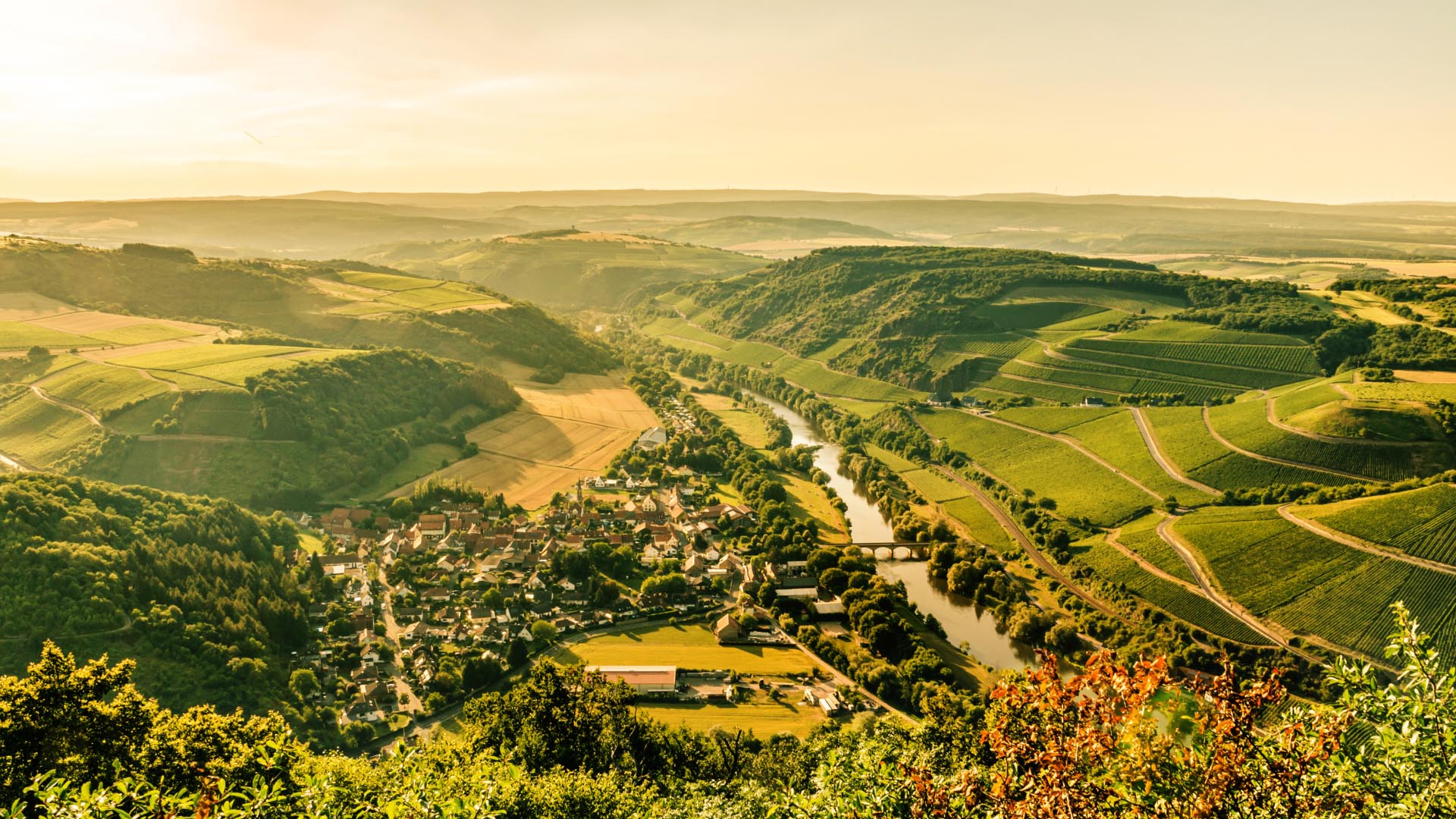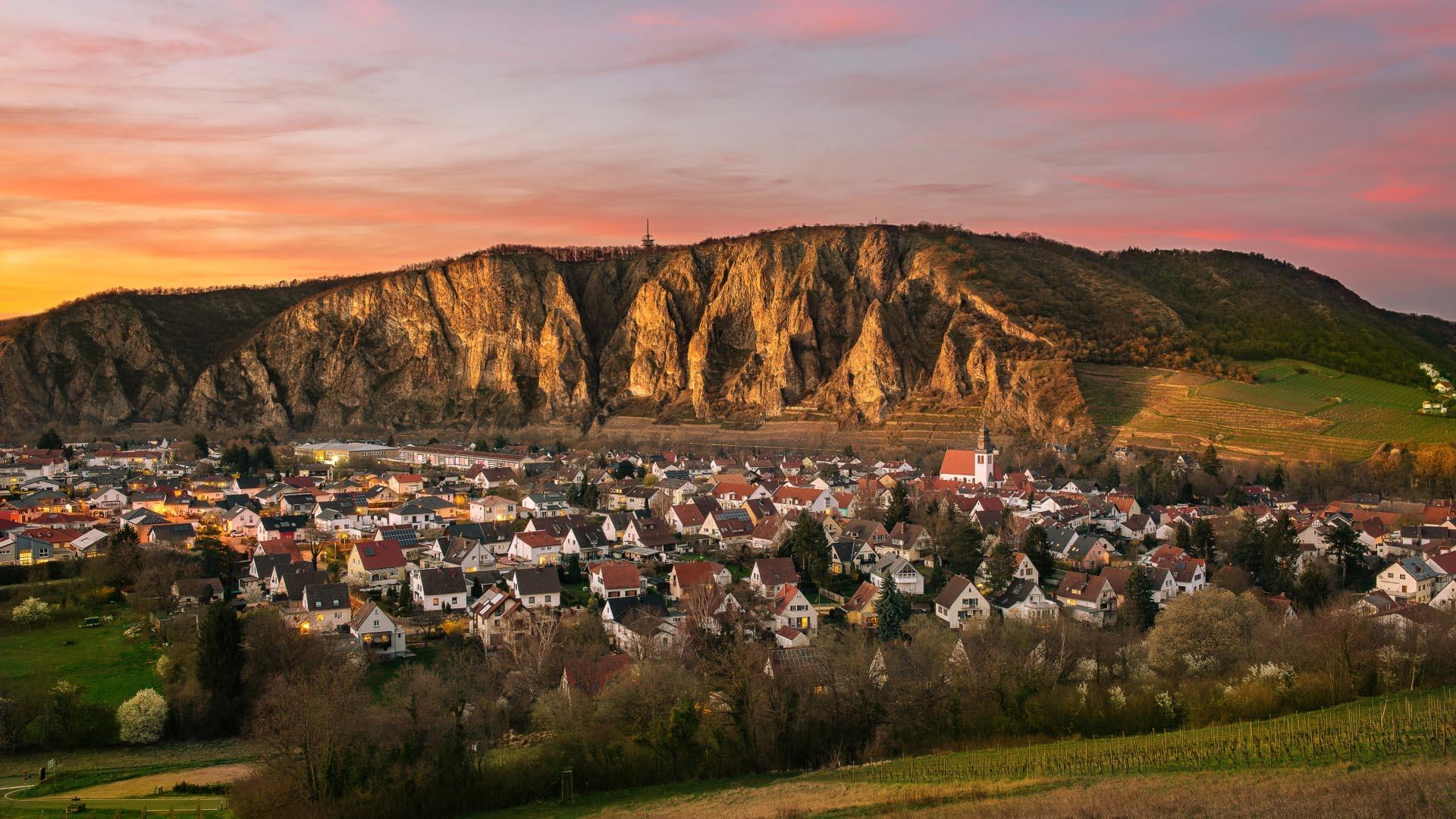Why wander far and wide when such good things are so close at hand in Nahe? This, or a similar sentiment, was once uttered by Johann Wolfgang von Goethe. It makes sense, as the conditions for Nahe’s viticulture sound truly poetic. Gentle hills, mild temperatures, and Germany’s greatest diversity of soils make for top-notch wines.
“It isn’t just our wines that shimmer and shine.”
But it isn’t just our wines that shimmer and shine: the hot lava flows deep in the earth’s interior below the Nahe region made Idar-Oberstein into a world-renowned center for gemstones. And you can also benefit from the earth beneath our feet here in terms of health, as many healing springs and spas in the Nahe region invite you to engage in holistic recreation.
Reach for excellence in Nahe
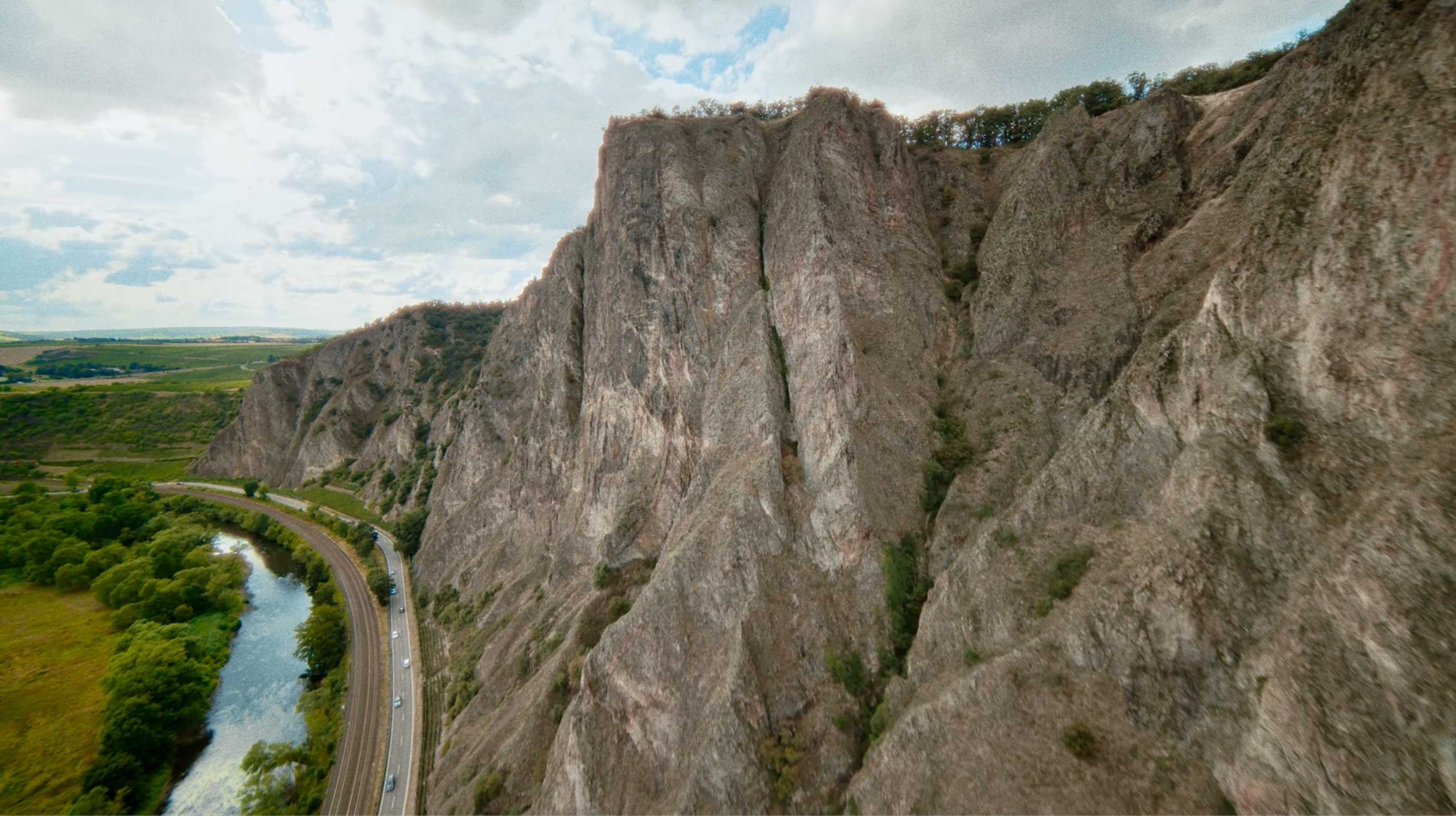
Cultivated area
Some 4,212 hectares are the basis for cultivation of 75 percent white wines and 25 percent red wines.
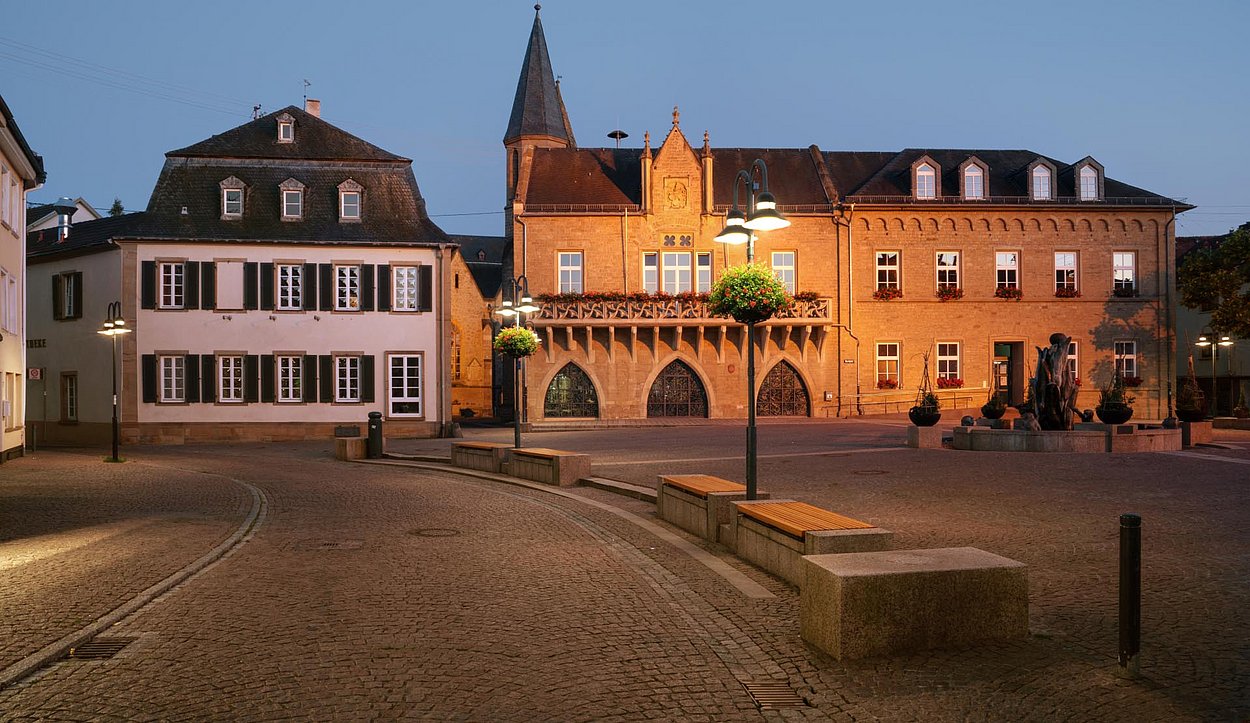
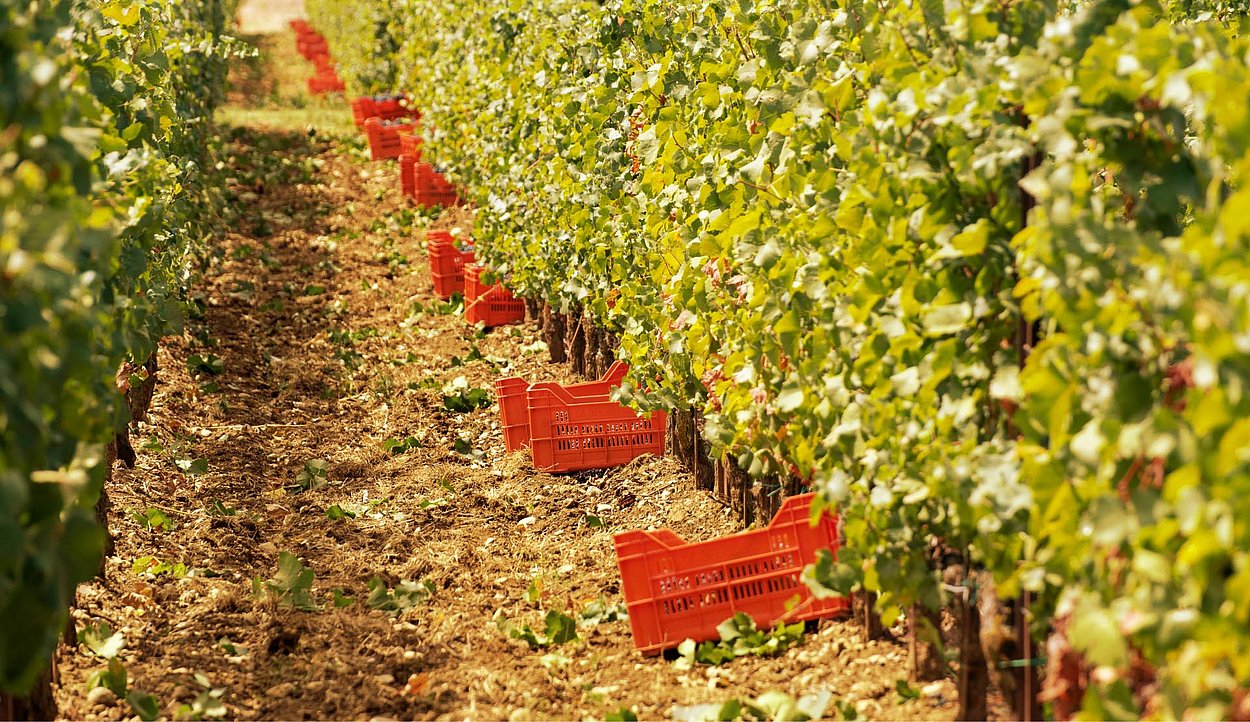
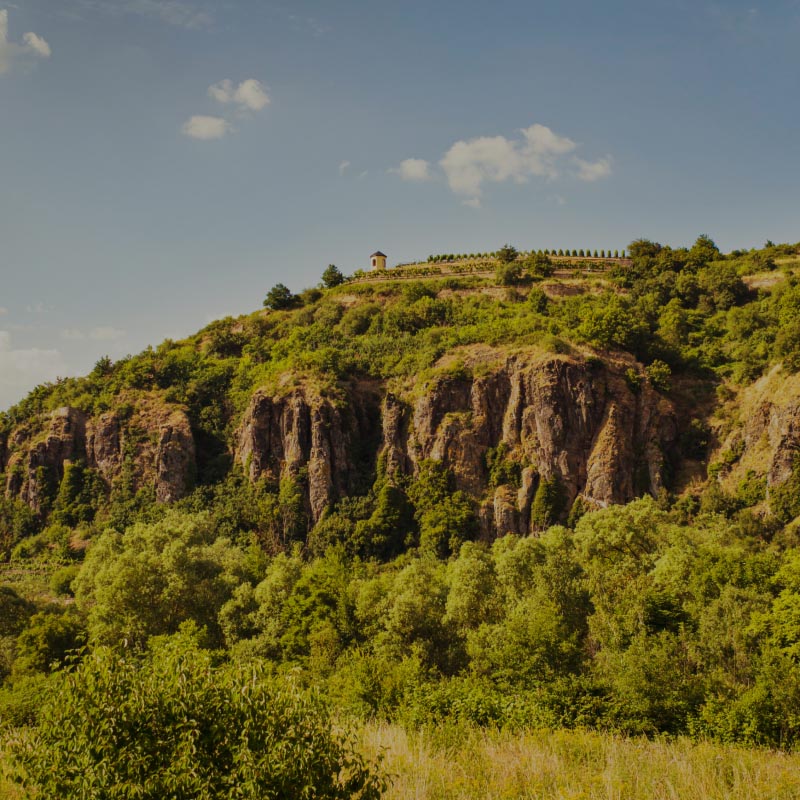
Rotenfels
Standing in front of it, you could almost think you were at the foot of Uluru in Australia: Rotenfels on the Nahe rises 202 meters above the surrounding land. This mountain has the highest sheer face between Scandinavia and the Alps and attracts many climbers.

Gemstoneland
In and around the gemstone center of Idar-Oberstein, you can learn everything there is to know about the history and geology of the Nahe region. Various gemstone mines and museums impressively show what makes the famous Nahe gemstones so special.
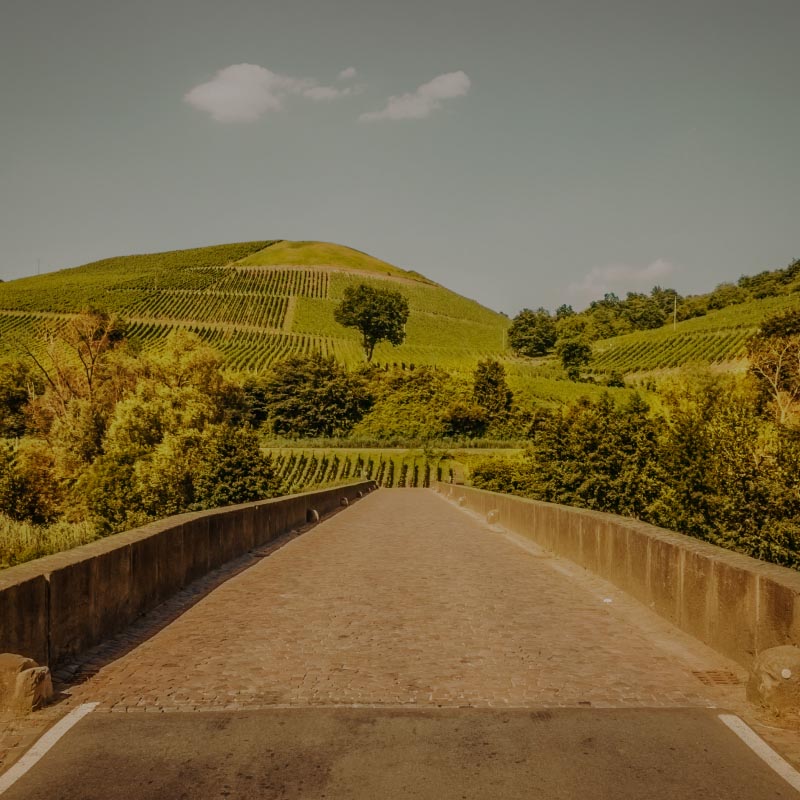
Nahe Cycle Route
This long-distance cycle route follows the Nahe river, after which the wine-growing region was named, as it proceeds from its source to its mouth over a distance of roughly 128 kilometers. From vineyards to wine-growing villages to towns, there is much to discover along the way.
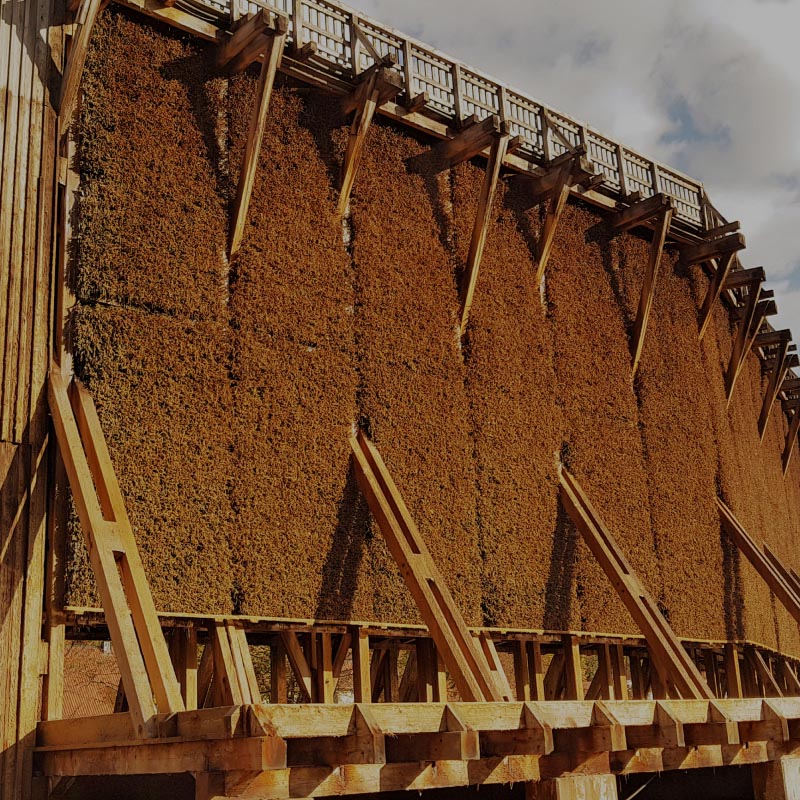
Salinental
Salinental between Bad Kreuznach and Bad Münster is a distinctive destination for health and wellness seekers. Graduation works with a total length of 1.1 km line up to form Europe’s largest open-air inhalatorium.
Further information can be found here:
Tourism and Experience
Investments
Make it in Rhineland-Palatinate
